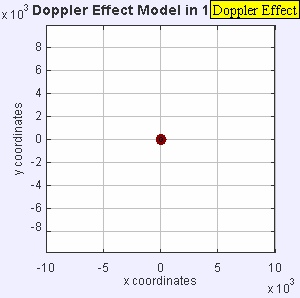Freefall at terminal is a very noisy place but there is no sensation of falling at all. Only pre terminal.
Well, yes, once you stop accelerating, your inner ear stops perceiving the effects of the air's acceleration relative to you. What... what exactly is your objection here?
Like wise, we should be under the influence of UA, and we should experience a=0.
Incorrect. Please, at the very least read the article describing UA before posting here.
On the same rocket but now accelerating at 1g in space away from any gravity
Once again, for those in the back: the stars are not a rocket, and they are not accelerating away from the Earth. They are not moving away from the Earth, or at least are not doing so due to UA. As far as UA is concerned, the height of the stars relative to the Earth's surface remains static.
Your analogy would make some sense if you were to
replace your source of gravity with an upward acceleration of a rocket. However, you're not doing that. You're adding more acceleration to the mix and acting surprised that your results have changed. That's not equivalence, now is it?
Where  is the acceleration
is the acceleration
a is 0. Therefore,

. I'll let you crunch the numbers from there.
The Doppler effect occurs when two bodies are in motion relative to one another. Reference frames don't come into this. You can use one of the bodies as a frame of reference to help you simplify the task of drawing a diagram, but you can just as well do it from an external inertial FoR.
I would strongly suggest that you do this, even if just in your imagination. I'll borrow some diagrams from Wikipedia. Consider a source of waves like this:

Now imagine it's moving away from you. Imagine the observer is located in the middle of the left-hand-side y axis. Whether the source accelerates or not is not important, since we're only discussing whether the effect is present at all, not its magnitude. The presence of relative motion will therefore be good enough.

You can, of course, see that a point on the left y axis would now observe a Doppler shift.
Finally, imagine that the point is not stationary on the y axis, but is rather moving in sync with the source. We can draw it from two perspectives. One of them uses the source as a frame of reference. That's just a repeat of the first diagram I've linked. But we can also draw it from an inertial perspective for your benefit.

Even though the source is moving, so is the observer. Since their speeds are matched, the observer picks up the waves' peaks at the exact same rate as if both objects were stationary. Consequently, the wavelength is unchanged compared to the two objects being stationary within the inertial FoR.
The Doppler effect occurs when the source and observer are in motion
relative to one another. The Equivalence Principle doesn't come into this. The two bodies are not in motion relative to one another (as far as UA is concerned), so there is no possible Doppler shift to be seen as a result of UA.